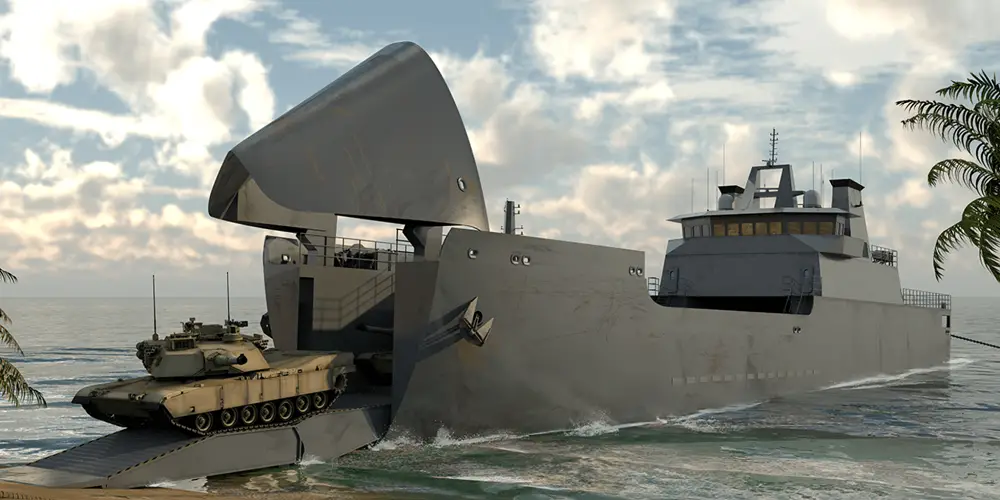BMT, a global leader in maritime design and technical consultancy, is pleased to announce the signing of a significant Memorandum of Understanding (MoU) with DNV, the world’s leading classification society and a trusted advisor to the maritime industry. This partnership marks a pivotal moment for Australian defence capabilities, particularly in accelerating BMT’s development of an Australian version of our CAIMEN® Large Design for the future Landing Craft – Heavy (LC-H) program for the Australian Army. Under this MoU, DNV will work with BMT throughout the process of tailoring our CAIMEN® Large, to meet the Australian Army’s future requirements. DNV’s insights will ensure that BMT are able to identify and manage technical risk, minimising schedule impacts through early classification society engagement.
The collaboration aims to enhance the design maturity of the future Australian variant of BMT’s CAIMEN® Large, reinforcing BMT’s commitment to delivering state-of-the-art, multi-mission amphibious capabilities to the Australian Defence Force (ADF). The CAIMEN® Large is designed for operational versatility, capable of performing intense amphibious assaults and humanitarian missions, and is well-suited to support the ADF’s focus on enhancing amphibious capabilities in littoral environments. The partnership between BMT and DNV underscores a shared commitment to excellence and innovation in the maritime sector. It promises to deliver robust, flexible, and advanced solutions, to enhance and sustain Australia’s landing craft capabilities for years to come.

“Partnering with DNV enables us to leverage their unparalleled expertise in certification and technical advisory, ensuring our designs meet rigorous standards and contribute effectively to Australia’s defence strategy,” stated Graeme Nayler, Regional Managing Director APAC, BMT. “This MoU sets the stage for a dynamic collaboration that will ultimately deliver enhanced operational capabilities to the Australian Army through a risk-based ship design.”
Tim Holt, Area Manager at DNV – Maritime, noted, “We are excited to work alongside BMT on this critical initiative. Our role in this partnership ensures the highest standards of design are embedded into the CAIMEN® Large from the outset through a comprehensive technical assurance approach, supporting BMT’s vision of providing a future-ready defence capability.”
BMT is a maritime-orientated high-end design house and technical consulting firm driven by a passion for solving complex, real-world problems. With around 1,300+ professionals located in 27 offices in the Americas, Asia, Australia and Europe, the company draw upon a wide range of experience and expertise to provide high-quality, high-value products and services. From initial concept through to design, construction, operation, and eventual decommissioning, BMT support customers at every stage of the project lifecycle. Formed in 1985 from the UK’s British Ship Research Association and National Maritime Institute merger, heritage includes the water tanks where the famous ‘bouncing bomb’ was developed during WWII and major, more recent advances in computer-aided design and aerodynamics.















